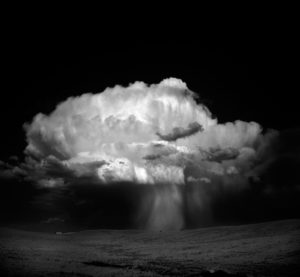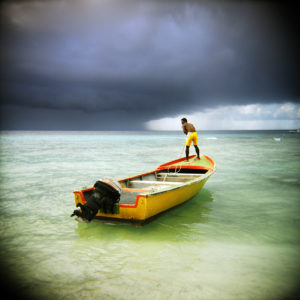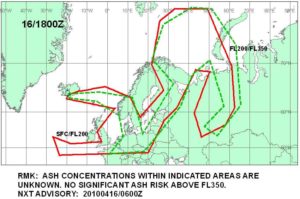We … call for an end to McCarthy-like threats of criminal prosecution against our colleagues based on innuendo and guilt by association, the harassment of scientists by politicians seeking distractions to avoid taking action, and the outright lies being spread about them.
The rhetoric from this letter to the 7 May issue of Science magazine may seem unusually overheated, especially considering it is signed by some 255 members of the U.S. National Academy of Sciences. But the topic is, of course, global warming, and the heat—political and social—has turned up several notches this year, as you know. (Indeed, the firestorm of commentary on the doctored picture of a polar bear on an ice floe that Science chose to accompany the letter is instructive of the tempers spilling out of the climate change discussion of late.) The rhetoric is a sure sign that climate change long ago outgrew the Ivory Tower and now hinges on the court of public opinion, where appearances are as critical as ideas. But that’s well understood; what’s new is that science seems to have moved on to yet another court of opinion where the appearance of fairness trumps all other familiar criteria.
The tipping point for the Science letter was a Civil Investigative Demand (CID) issued in April by the office of Virginia Attorney General Kevin Cuccinelli as part of a fraud investigation of climate change research conducted at the University of Virginia. Specifically, the CID would have the university turn over all documentation, correspondence, work—anything basically—related to five grants stretching back to as much as 11 years ago for climate change research by Michael Mann, a leading climatologist who has since moved on from Charlottesville to Penn State University. The CID gave the university just three months to complete the state’s massive, time-consuming document search.
The outrage from scientists was joined last week by AMS Executive Director Keith Seitter and UCAR President Rick Anthes, whose letter to the UVA president seeks protection of the scientific process, while it is still possible to challenge the CID.
We feel strongly that the actions of the Virginia Attorney General represent an inappropriate use of government authority, and urge you to do everything within your power to uphold the tenets of academic freedom.
The university’s faculty senate, the American Civil Liberties Union, American Association of University Professors, and others had also cautioned that compliance with the CID could compromise academic freedoms. Even one of Mann’s most persistent critics (aimed mostly at his “hockey stick” graph of rising temperatures that has gotten considerable exposure through the IPCC and other citations) has condemned Cuccinelli’s tactic. On Friday, UVA administrators announced they would use private funds for legal representation in this matter, saying “Research universities must defend the privilege of academic freedom in the creation of new knowledge.”
At the same time, Nature magazine joined the chorus of protest from scientists with an equally strong editorial in their 13 May issue.
Cuccinelli’s actions against Mann hark back to an era when tobacco companies smeared researchers as part of a sophisticated public relations strategy to raise doubts over the science showing that tobacco caused cancer, and delayed the introduction of smoking curbs for decades. Researchers found themselves bogged down in responding to subpoenas and legal challenges, which deterred others from the field. Climate-change deniers have adopted similar strategies with alacrity and, unfortunately, considerable success.
It is easy to see why Nature considers the Virginia fraud investigation part of a trend. Climate science has gotten more entangled in the legal system since the hacking of emails at East Anglia. In February, three states—Texas, Alabama, and, yes…Virginia—said they would challenge EPA regulation of carbon dioxide as a pollutant. The suit is based on doubts about the validity of anthropogenic climate change fueled by the East Anglia e-mails that were hacked (or stolen or leaked) last fall.
And while the legal system is now a venue for challenging the scientific basis of climate change, scientists in turn are using the same system to respond to attacks on themselves and their work. In March, lawyers for Mann took action to stop internet distribution of a video lampooning one of his emails in the East Anglia servers. Similarly, late last month, Andrew Weaver of the University of British Columbia, one of the lead IPCC authors (and former chief editor of Journal of Climate) filed a libel suit against The National Post of Canada. Dr. Weaver said, “I asked The National Post to do the right thing – to retract a number of recent articles that attributed to me statements I never made, accused me of things I never did, and attacked me for views I never held. To my absolute astonishment, the newspaper refused.”
Already, plenty of words have been spilled on the pitfalls of scientists becoming their own advocates in the policy arena. Now climate change science steps out further, to be evaluated in a system that not so much determines truth as upholds fairness through a competition of advocacy. The rules of the game are even more obscure than before. The ball is officially in someone else’s court, and it is difficult to imagine this is any better for science.





